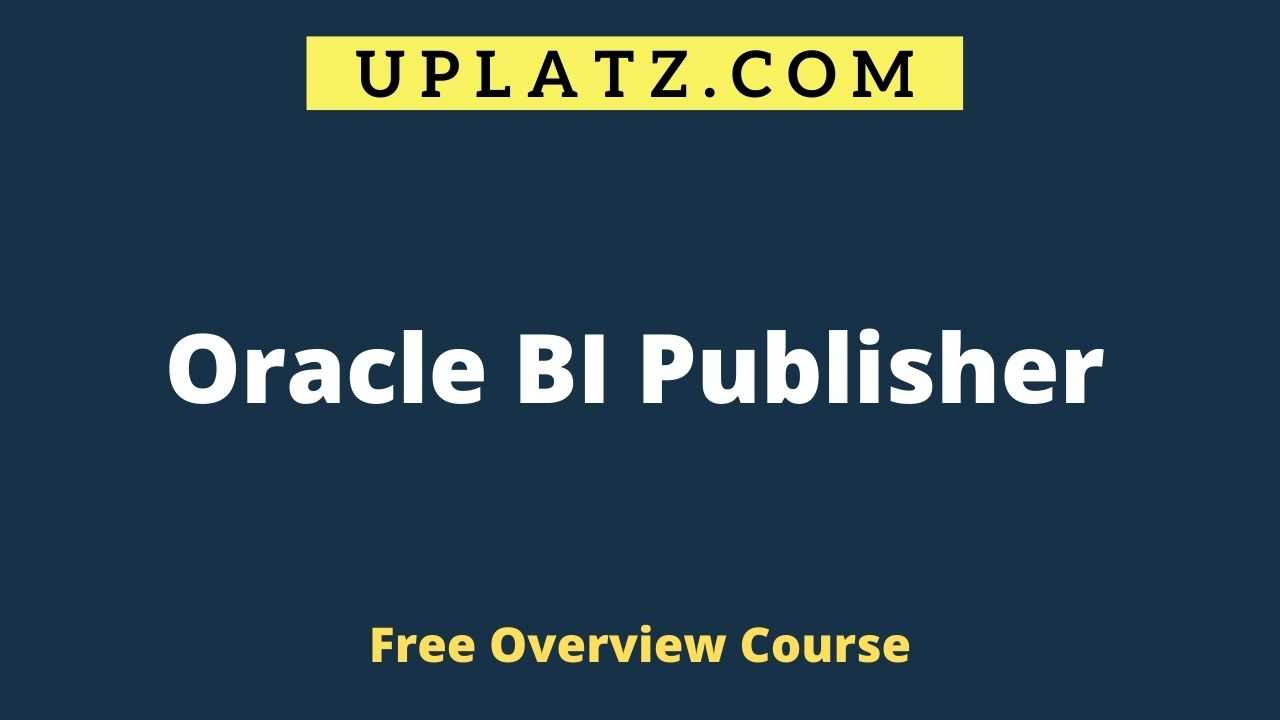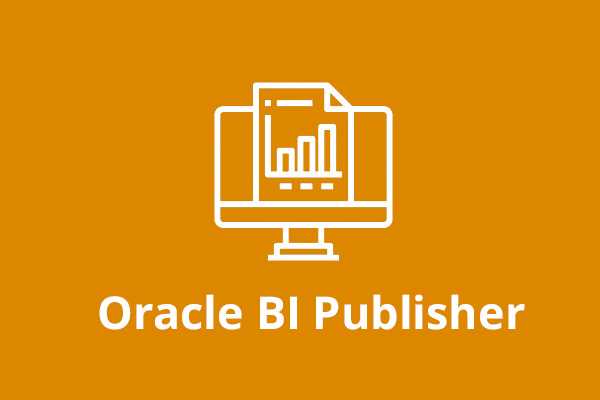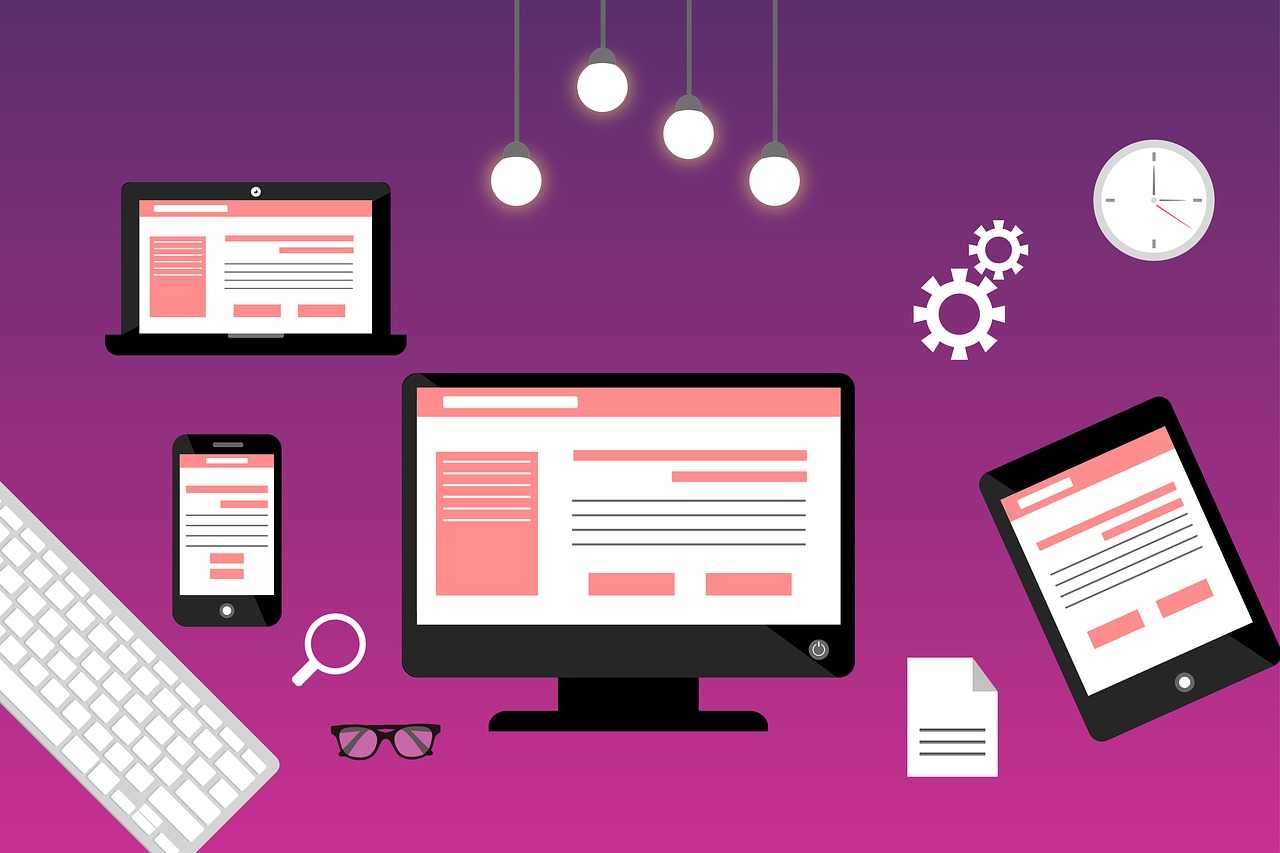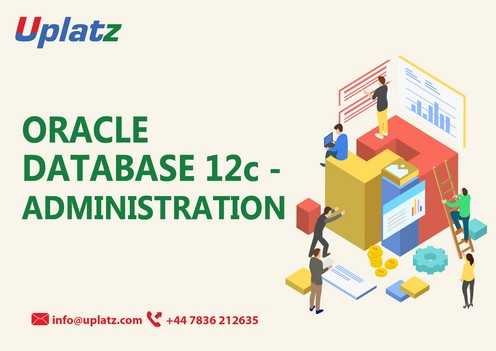Overview Course - Oracle BI Publisher
Create Oracle Business Publisher (BI) reporting applications & reports. Master Report Design & Data Integration as BI Developer or Data Analyst. View Course Curriculum
Price Match Guarantee
Full Lifetime Access
Access on any Device
Technical Support
Secure Checkout
Course Completion Certificate
View Course Curriculum
Price Match Guarantee
Full Lifetime Access
Access on any Device
Technical Support
Secure Checkout
Course Completion Certificate
 67% Started a new career
BUY THIS COURSE (GBP 10)
67% Started a new career
BUY THIS COURSE (GBP 10)
-
 52% Got a pay increase and promotion
52% Got a pay increase and promotion
Students also bought -
-

- Oracle BI Publisher
- 3 Hours
- GBP 29
- 622 Learners
-

- Oracle APEX
- 5 Hours
- GBP 29
- 469 Learners
-

- Oracle DBA
- 10 Hours
- GBP 29
- 478 Learners

This is an overview course on Oracle BI Publisher while the complete detailed-level Oracle BI Publisher course is available at - https://training.uplatz.com/online-it-course.php?id=oracle-bi-publisher-58. Business Intelligence Publisher from Oracle is an advanced reporting solution that helps users in creating, managing and delivering documents or reports faster than traditional tools.
Oracle BI Publisher is an enterprise reporting solution for Production Reporting. It is available as part of OBIEE suite, Standalone Enterprise Release as well integrated with most of the Oracle Enterprise Application as Oracle Fusion Application, Oracle eBusiness Suite (EBS 11i, R12), People Soft, Siebel CRM , JD Edwards and many more. View reports online or schedule them and deliver tens of thousands of documents per hour with minimal impact to transactional systems.
Oracle BI Publisher (formerly known as XML Publisher) is a reporting and document generation tool developed by Oracle. It enables users to create, manage, and deliver various types of documents and reports from multiple data sources. BI Publisher is designed to separate the data extraction process from the layout and formatting, allowing for more flexible and efficient report creation and management.
Key Features of Oracle BI Publisher
1. Data Source Flexibility
BI Publisher can integrate with a variety of data sources, including:
- Databases: Oracle, SQL Server, DB2, and other JDBC-compliant databases.
- Web Services: Access data from RESTful or SOAP-based web services.
- XML Files: Use XML data files as input for reports.
- Excel Files: Import data from Excel spreadsheets.
- Oracle Applications: Seamless integration with Oracle E-Business Suite, PeopleSoft, JD Edwards, and more.
2. Template-Based Reporting
BI Publisher uses templates to define the layout and format of reports. Templates can be created using familiar tools such as:
- Microsoft Word: Users can design report templates with Word, leveraging its features for styling and formatting.
- Microsoft Excel: Excel templates are ideal for reports that require complex calculations and data manipulations.
- Adobe Acrobat: Create PDF templates for highly formatted reports.
- XSL-FO: Advanced users can define templates using XSL-FO for fine-grained control over the report layout.
3. Dynamic and Interactive Reports
Reports generated by BI Publisher can include interactive elements:
- Drill-Down Capabilities: Users can drill down into data for more detailed analysis.
- Parameterized Reports: Allow users to filter and customize report output by entering parameters.
- Interactive Charts and Graphs: Visual representations of data that can be customized and interacted with.
4. Multiple Output Formats
BI Publisher supports a wide range of output formats, ensuring compatibility with various business needs:
- PDF: For print-ready documents.
- Excel: For data analysis and manipulation.
- HTML: For web-based reports.
- RTF: Rich Text Format for compatibility with word processors.
- eText: For electronic data interchange (EDI).
- PPTX: PowerPoint presentations.
5. Scheduled and Bursted Reporting
BI Publisher offers robust scheduling and bursting capabilities:
- Scheduled Reports: Automate report generation and delivery at specified times.
- Bursting: Split a single report into multiple documents based on specific criteria and deliver them to different recipients.
6. Secure Report Distribution
Ensure secure and controlled distribution of reports:
- Email: Send reports via email with configurable security settings.
- FTP/SFTP: Transfer reports to secure file servers.
- WebDAV: Publish reports to WebDAV-compliant repositories.
- Content Management Systems: Integration with Oracle WebCenter Content and other content management systems.
7. Integration with Oracle BI Suite
BI Publisher is tightly integrated with the broader Oracle Business Intelligence Suite:
- Oracle BI Enterprise Edition (OBIEE): Leverage OBIEE's data models and security framework.
- Oracle Analytics Cloud: Extend reporting capabilities to Oracle's cloud-based analytics platform.
8. User-Friendly Interface
BI Publisher provides an intuitive web-based interface for report design, management, and administration:
- Report Builder: A drag-and-drop tool for creating and modifying report templates.
- Data Model Editor: Define and manage data models that underpin reports.
- Catalog: Organize, search, and manage reports, templates, and data models.
This is an overview course on Oracle Business Intelligence Publisher by Uplatz while the full Oracle BI Publisher course will cover practical demonstration of Data Model Editor, Layout Editor, using OBIEE as a datasource and publisher (via Dashboards). You will learn how to harness and distribute data in a meaningful way, create data models by using the Data Model Editor, create BI Publisher reports based on data models, create report layouts by using the Layout Editor (online), create reports based on OBI EE data sources, publish the reports on OBIEE Dashboards, schedule reports and burst these reports.
Course/Topic - Oracle BI Publisher overview - all lectures
-
Overview and Installation
-
Reports using RTF Template - Online Mode
The objective of this Oracle BI Publisher overview course is to provide learners with a comprehensive understanding of BI Publisher's capabilities for designing, generating, and managing enterprise reports. Participants will gain practical experience with report creation, data model design, and template development, leveraging BI Publisher’s robust features to produce and distribute highly formatted, interactive reports. By the end of the course, learners will be proficient in using Oracle BI Publisher to create actionable insights, streamline reporting processes, and effectively communicate data across the organization.
Oracle BI Publisher Course Objectives
1) Understand the fundamentals of BI Publisher: Learn the core concepts and architecture of Oracle BI Publisher as a reporting solution.
2) Create data models: Master the use of the Data Model Editor to define data sources and relationships for reports.
3) Design report layouts: Utilize the Layout Editor to create visually appealing and informative report layouts.
4) Develop reports with various templates: Learn to create RTF templates using Template Builder, Excel templates, and other formats.
5) Integrate with various data sources: Connect BI Publisher to diverse data sources like databases, XML files, and web services.
6) Parameterize and schedule reports: Implement parameters for dynamic report generation and schedule reports for automated delivery.
7) Burst and distribute reports: Leverage bursting capabilities to deliver personalized reports to multiple recipients.
8) Secure reports with appropriate access controls: Apply security measures to ensure that reports are accessed only by authorized users.
9) Administer BI Publisher Server: Learn the basics of server administration, including configuration and troubleshooting.
10) Apply best practices for report development and maintenance: Follow industry-standard best practices to optimize report performance and maintainability.
1. Overview
2. Installation
3. General Navigation and Preference
· Create a new folder
· Uploading a Resource to Catalog
· Setting My Account Preferences
· Configuring Data Sources
· Creating a Data Model
4. Creating Reports
· Creating a new report
· Creating a report using report editor
· Viewing a report in interactive view
· Creating a Report Job
· Managing Report Job
· Connecting to an Email Server
· Inserting Gauge Chart or a Pivot Table
5. Reports using RTF Template
· Building RTF Template in offline mode
· Building an RTF Template in Online Model
· Using Template builder utility - Validate Template
· Using Template builder utility - Field Browser
· Using Template builder utility - Check Accessibility
6. Administering BI Publisher
Key Objectives of Oracle BI Publisher Training
· Understand and apply the uses and concepts of BI Publisher
· Create BI Publisher templates
· Create and maintain reports using BI Publisher Enterprise
· Create and run reports interactively
· Schedule and deliver reports to recipients
· Gain knowledge on X standards
· Create and apply templates for rich text format (RTF) and portable document format (PDF) formats
· Set up and configure enterprise server of BI Publisher
· Easily analyze data and schedule reports
· Explore advanced topics in BI Publisher
· Create reports effortlessly based on files, really simple syndication (RSS) feeds and web services
· Create data templates for eXtensible Markup Language (XML)
This Oracle BI Publisher overview training course is designed to master the advanced reporting solution. This training will help the delegates to clear the Oracle certified BI Publisher Examination.
The Oracle BI Publisher overview course provide an introduction to BI Publisher, an online reporting application which is much faster than traditional reporting tools. The learners get to know the benefits of Oracle BI Publisher and to create BI publisher reports, reporting layout and publish the reports.
The Oracle BI Publisher gain proficiency in authoring and delivering highly formatted documents such as operational reports, transfer document, sales and marketing content and much more. The BI Publisher develops the knowledge and skills related to Oracle BI Publisher reporting solution.
Uplatz online training ensures the participants to successfully go through the Oracle BI Publisher Overview course training.
Course Completion Certificate will be awarded by Uplatz upon the completion of the Oracle BI Publisher Overview course training.
The Oracle Business Intelligence Publisher draws an average salary of $101,728 per year depending on the skill, knowledge and hands-on practice.
The Oracle Business Intelligence Publishers have major demand in global-based companies and MNCs. The Oracle Business Intelligence Publisher is responsible for creating reports, dashboards and layouts based on the requirement.
The Oracle BI Publisher overview course is ideally designed for analysts and developers who want to become Business Intelligence professionals.
After pursuing this course, the participants will be able to pursue a wide range of career paths.
The following are the job titles:
· BI Publisher Developer
· BI Analyst
· BI Associate
· BI Publisher
· BI ERP publisher
· Oracle BI Associate
The Business Intelligence publisher professionals can author and create any type of report or layout or high formatted documents.
1. What Is Oracle BI Publisher?
It is a reporting tool for generating the reports. More than tool it is an engine that can be integrated with systems supporting the business.
2. Is Oracle BI Publisher Integrated With Oracle Apps?
Yes, it is tightly integrated with Oracle Apps for reporting needs. In 11.5.10 instances xml publisher was used, in R12 we can it Oracle BI Publisher.
3. What Is The Difference Between Xml Publisher And Oracle BI Publisher?
Name is the difference, initially it was released on the name of xml publisher( the initial patchset), later on they have added more features and called it Business Intelligence Publisher. In BI by default we have integration with Datadefinitions in R12 instance. Both these names can be used interchangeably.
4. What Are The Various Components Required For Developing A Oracle BI Publisher Report?
Data Template, Layout template and the integration with Concurrent Manager.
5. How Does The Concurrent Program Submitted By The User Knows About The Data Template Or Layout Template It Should Be Using For Generating The Output?
The concurrent program ‘shortname’ will be mapped to the ‘code’ of the Datatemplate. Layout template is attached to the datatemplate, this forms the mapping between all the three.
6. What Is A Data Template?
Data Template is an xml structure which contains the queries to be run against the database so that desired output in xml format is generated, this generated xml output is then applied on to the layout template for the final output.
7. What Is A Layout Template?
Layout template defines how the user views the output, basically it can be developed using Microsoft word document in rft (rich text format) or Adobe pdf format. The data output in xml format (from Data template) will be loaded in layout template at run time and the required final output file is generated.
8. What Are The Output Formats Supported By Layout Template?
xls, html, pdf, eText etc are supported based on the business need.
9. Do You Need To Write Multiple Layout Templates For Each Output Type Like Html/pdf?
No, only layout template will be created, Oracle BI Publisher generates desired output format when the request is run.
10. What Is The Default Output Format Of The Report?
The default output format defined during the layout template creation will be used to generate the output, the same can be modified during the request submission and it will overwrite the one defined at layout template.
11. Can You Have Multiple Layout Templates For A Single Data Template?
Yes, multiple layouts can be defined, user has a choice here to use one among them at run time during conc request submission.
12. Where Do You Register Data And Layout Templates?
Layout template will be registered under xml publisher administrator responsibility>Templates tab.
Data template will be registered under xml publisher admininstrator responsibility> Data Definitions.
13. I Want To Create A Report Output In 10 Languages, Do I Have To Create 10 Layout Templates?
No, Oracle BI Publisher provides the required translation for your templates, based on the number of languages installed in your oracle apps environment requires outputs are provided.
14. What Is The Required Installation For Using Bi Pub Report?
Oracle BI Publisher desktop tool has be installed. Using this tool you can preview or test the report before deploying the same on to the instance.
15. How Do You Move Your Layout Or Data Template Across Instances?
xdoloader is the utility that will be used.
16. What Is The Tool To Map Required Data Output And Layout Templates So That They Can Be Tested In Local Machine?
Template viewer will be used for the same.
17. Which Component Is Responsible For Generating The Output In Xml Format Before Applying It To Layout Template?
DataEngine will take DataTemplate as the input and the output will be generated in xml format which will then be applied on layout template.
18. Can Oracle BI Publisher Reports Be Used In Oaf Pages?
XDO template utility helper java classes are provided for the same.
19. Name Some Business Use Cases For BI Reports?
Bank EFT, customer documents, shipping documents, internal analysis documents or any transactional documents.
20. How Do You Pass Parameters To Your Report?
Concurrent program parameters should be passed, ensure that the parameter name/token are same as in the conc prog defn and the data template.
21. What Are The Various Sections In The Data Template?
o Parameter section
o Trigger Section
o Sql statement section
o Data Structure section
o Lexical Section
22. What Does Lexical Section Contain?
The required lexical clause of Key Flex field or Descriptive FF are created under this section.
23. What Triggers Are Supported In Data Template?
Before report and After report are supported.
24. Where Is The Trigger Code Written?
The code is written in the plsql package which is given under ‘defaultpackage’ tag of data template.
25. What Is The File Supporting The Translation For A Layout Template?
xliff is the file that supports the translation, you can modify the same as required.
26. How Do You Display The Company Logo On The Report Output?
Copy and paste the logo (.gif. or any format) on the header section of .rtf file. Ensure you resize per the company standards.
27. How To Upload Rtf Template From Backend?
Using XDO Loader, we can upload an RTF from Backend.
28. How To Map Rtf Template Via Backend?
Using FND_PROGRAM.ADD_TEMPLATE api we can map.
29. What Are The Executable And Concurrent Program Used To Develop A Report Without Rdf?
XDODTEXE is used as Executable, Java Concurrent Program is used Concurrent Program for developing a report without RDF.
30. How To Repeat The Header Of The Template On Each And Every Page Of The Output?
Use in order to repeat that specific section in each page of the output.also to reset the page number.
31. How Many Ways We Can Display Images In A Oracle BI Publisher Report?
It can be done in 5 ways:
o Direct Insertion into RTF Template
o URL Reference
o OA_MEDIA directory reference
o Image from BLOB datatype from database
o Using UI Beans
32. What Are The Xml Publisher Tables?
PER_GB_XDO_TEMPLATES
XDO_DS_DEFINITIONS_B
XDO_DS_DEFINITIONS_TL
XDO_DS_DEFINITIONS_VL
XDO_LOBS
XDO_TEMPLATES_B
XDO_TEMPLATES_TL
XDO_TEMPLATES_VL
XDO_TEMPLATE_FIELDS
XDO_TRANS_UNITS
XDO_TRANS_UNIT_PROPS
XDO_TRANS_UNIT_VALUES









